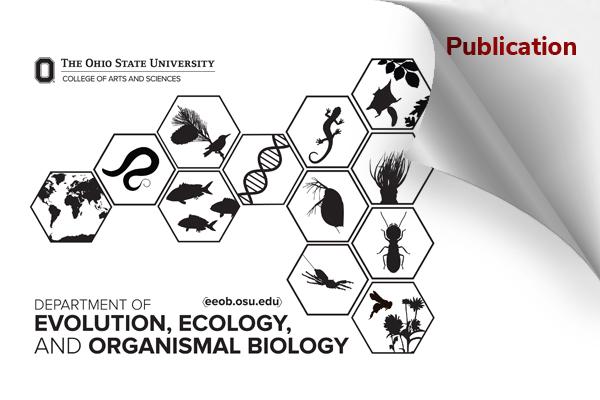EEOB publication - Almeida, Ludsin, Marschall

Lingering legacies: Past growth and parental experience influence somatic growth in a fish population
L. Zoe Almeida, Stuart A. Ludsin, Matthew D. Faust, Elizabeth A. Marschall. 2024. doi.org/10.1111/1365-2656.14143
Abstract
Body size and growth rate can influence individual and population success by mediating fitness. Understanding the factors that influence growth can be difficult to disentangle, however, because growth can be shaped by environmental conditions recently experienced, as well as legacy effects from conditions experienced earlier in life and by parents (via parental effects).
To improve understanding of growth among annual cohorts (1982–2015) of Lake Erie Walleye (Sander vitreus), a species with life-history and growth characteristics similar to many other long-lived, iteroparous fishes, we determined the role of the following hypothesised factors: (H1) recent environmental conditions; (H2) traits and experiences of the cohort, including growth, in the previous year; (H3) early-life cohort density; (H4) early-life body size; and (H5) parental composition and environment. We evaluated the relative importance of these hypothesised factors using piecewise structural equation modelling in an information-theoretic framework.
Our results indicated that cohort-specific growth of Lake Erie Walleye was most strongly influenced by traits (growth) and experiences of the cohort during the previous year (H2) and parental composition and environment (H5). The observed negative relationship with growth during the previous year may indicate that Walleye exhibit compensatory growth. The relationships with parental sizes and environments may mean that parental contributions to offspring affects cohorts into adulthood, with serious implications for the effects of climate change. Warm winters appear to negatively influence offspring growth performance for many years.
Legacy effects had a stronger influence on cohort growth than recent environmental conditions, providing new understanding of how somatic growth is regulated in Lake Erie's Walleye population. Specifically, the parental composition and environment appear important via epigenetic and/or egg-provisioning legacies, with carryover effects modifying growth among years. Ultimately, our findings demonstrate that understanding recent growth in animal populations similar to Lake Erie Walleye may require knowledge of past conditions, including those experienced by parents.
